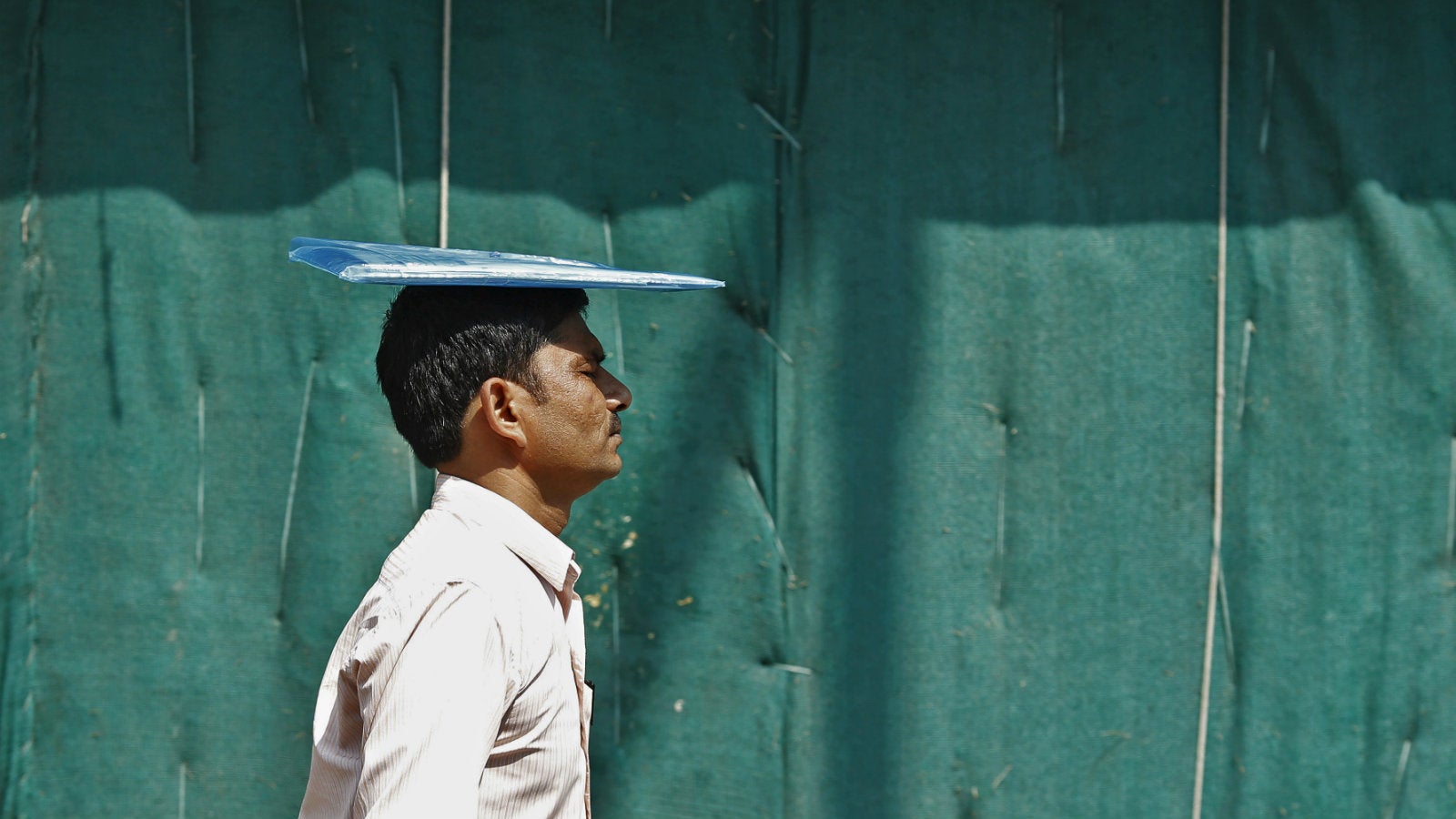Deadly heatwaves will be sweeping across India for the next few weeks
The deadly and persistent heatwaves sweeping the Indian subcontinent over the past few weeks have now hit New Delhi.


The deadly and persistent heatwaves sweeping the Indian subcontinent over the past few weeks have now hit New Delhi.
On May 22, parts of the national capital recorded its highest temperature of the year, 46°C, joining Rajasthan, Andhra Pradesh, and Telangana in getting scorched. What’s worse, the India Meteorological Department (IMD) expects the extreme conditions to continue throughout this week, hitting states such as Maharashtra, Rajasthan, Punjab, Haryana, and Uttar Pradesh, too. It has warned that temperatures could reach as high as 48°C.
The dangerous heatwave conditions in northern India could even extend into the first weeks of June, putting hundreds of Indians at risk, even as the southwest monsoon is expected to arrive by the end of this month.
In some states, high temperatures, combined with other atmospheric disturbances, have sparked violent storms, destroying houses and uprooting hundreds of trees. Earlier this month, freak dust storms in Rajasthan and Uttar Pradesh left over 100 people dead, while lightning strikes alone killed 14 people on a single day in Andhra Pradesh and Telangana. On May 13, thunderstorms led to deaths of at least 70 people in Uttar Pradesh, Andhra Pradesh, and West Bengal.
Weather experts say the frequency and intensity of these events are heightened by rising temperatures across India. In January, the IMD said 2017 was one of the warmest years in the country’s history; it followed the hottest recorded year in over a century, 2016, when hundreds of Indians died of sunstroke. Between 2013 and 2016, over 4,000 Indians lost their lives to heat—and it is likely that the numbers are under-reported.
The government, on its part, has been working on action plans, encouraging states to invest in advance planning and monitoring. States have been asked to ensure drinking water availability at railway stations and bus stations, besides recommending best practices to be followed during heatwaves. According to India’s National Disaster Management Authority (NDMA), which has set a zero-mortality goal, these efforts are beginning to pay off this year.
Meanwhile, the worst-hit are those who work outdoors—a significant proportion of Indians, notably farmers and construction workers. Most of them can hardly afford to stop working for weeks on end. In 2015, the deadliest heatwave year of late, many of those killed were construction workers or the homeless.
Last year, a study showed that with just a half degree increase in temperatures, the death toll could surge in India. While the country’s now investing in renewable energy and electric vehicles, its cities have already become urban heat islands.
In fact, research suggests that many parts of south Asia could eventually become uninhabitable. At the moment, Karachi in Pakistan is also experiencing a heatwave. In just three days, at least 65 people have reportedly been killed.